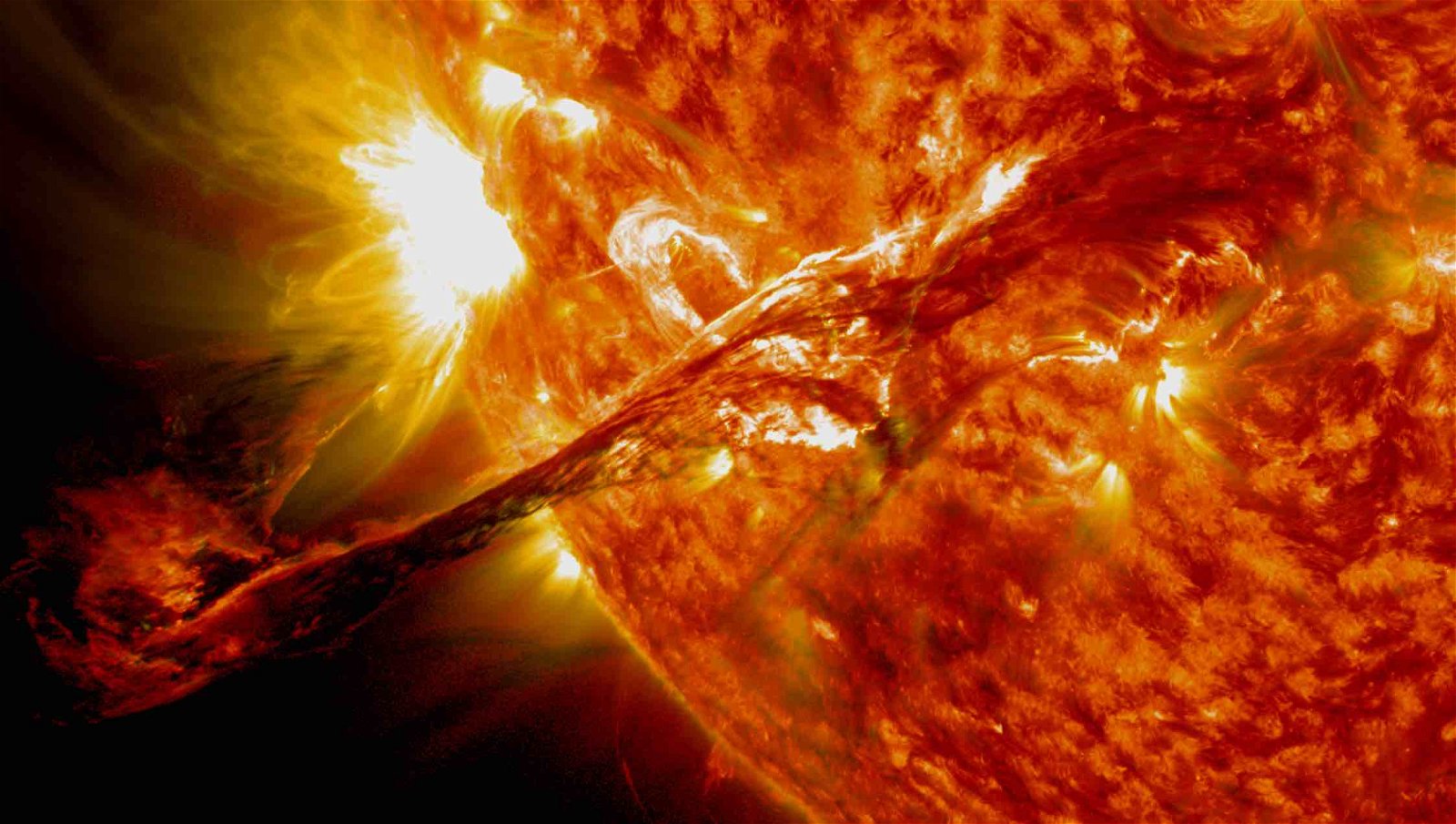The Sun has entered its solar maximum, according to experts who are looking ahead at the possibility of potentially volatile space weather in the near future.
Reaching the zenith of its 11-year cycle, the Sun is experiencing significant amounts of magnetic activity, as revealed at a press conference last week with participation from NASA, the National Oceanic and Atmospheric Administration (NOAA), and the Solar Cycle Prediction Panel.
Pole Flips and Sunspots
As the solar cycle builds to its maximum, the Sun experiences a pole flip in the middle of each 11-year cycle. This reversal ignites a stormy season on the nuclear ball of gas that the Earth revolves around. Magnetic storms lead to the creation of sunspots, cool areas arising from an intense convergence of magnetic field lines. These points become visible as dark spots on the surface of the Sun.
“During solar maximum, the number of sunspots, and therefore, the amount of solar activity, increases,” explained NASA Space Weather Program director Jamie Favors. This increase in activity provides an exciting opportunity to learn about our closest star — but also causes real effects at Earth and throughout our solar system.”
Recent Solar Activity
The Sun is a significant driver of space weather. Satellites and astronauts in space, power grids on Earth, and all the communications systems in between are susceptible to harsh space weather. In recent months, a surge of solar activity has occurred, including the visually stunning increase in aurora visibility on Earth. However, there are also the more troubling impacts solar activity has on satellites and other infrastructure.
Solar concerns became highly prevalent in May of this year. Massive solar flares and coronal mass ejections erupted from the surface of the Sun, launching charged particles and magnetic fields that resulted in Earth’s strongest geomagnetic storm in two decades. Scientists speculate that the auroras that resulted may have been the strongest in half a millennium.
“Solar Cycle 25 sunspot activity has slightly exceeded expectations,” explained Lisa Upton, co-chair of the Solar Cycle Prediction Panel and lead scientist at Southwest Research Institute in San Antonio, Texas. “However, despite seeing a few large storms, they aren’t larger than what we might expect during the maximum phase of the cycle.”
Future Space Weather
While the Sun still has a year of potential turbulence ahead of it, the worst may be over for this cycle. It took months to recognize the true peak of the activity, since identifying a consistent trend of decline was required before a peak could be accurately identified. For two years, scientists have kept a close eye on isolating such peak conditions as they monitored intense solar activity.
The coalition of NASA, NOAA, and the Solar Cycle Prediction Panel has been monitoring these cycles in tandem since 1989. Their work builds on hundreds of years of astronomical research since Galileo first observed sunspots in 1610. Since then, scientists have recorded cycles of varying length and intensity.
Currently, our increased reliance on space-based communications, as well as increasing strain placed on electrical power grids, emphasizes the need for understanding the potentially dangerous impact of volatile space weather, and how to safely mitigate issues arising from it .
Ryan Whalen covers science and technology for The Debrief. He holds a BA in History and a Master of Library and Information Science with a certificate in Data Science. He can be contacted at ryan@thedebrief.org, and follow him on Twitter @mdntwvlf.

